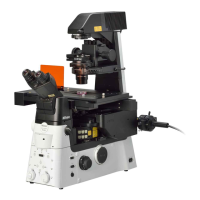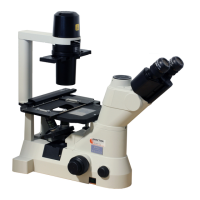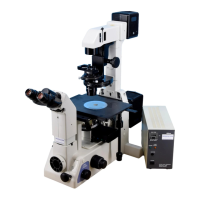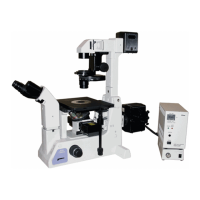Chapter 4 Microscopy Techniques
85
Characteristics of Ph objectives
Ph objective View Contrast Latitude Application examples
Dark
contrast
DLL
DL
Generally, objects with a
larger phase contrast
look dark.
Therefore a dark image
appears in a relatively
bright field, which is
similar to an image in BF
microscopy.
This is
suitable for
details
observation
with a focus
on micro
contrast.
Half tone
(the use
range is wide)
Phase contrast
and absorbing
objects (stained
objects) in the
low and mid
ranges
Spores of fungus,
ordinary living cells,
thick specimens,
fungus, stained
specimens, insect
eggs, fat globules,
crystals, etc.
DM
Hard tone
(the use
range is
relatively
narrow)
Transparent
object in the low
range
Fungus, protozoa
flagellum, fibrin fibril,
fine granule, section
with a carefully
selected mounting
agent, ultrathin section,
etc.
Bright
contrast
BM
Generally, objects with
larger phase contrast
look brighter.
Therefore a bright image
appears in a relatively
dark field, which is
similar to an image in
DF microscopy.
This microscopy is suitable
for observing the form of and
detecting and calculating
minute fibers or granules
with a focus on macro
contrast.
Almost all ranges
Fungus, protozoa
flagellum, fibrin fibril,
fine granule, cytometry,
etc.
Dark
contrast
(apodiza-
tion)
ADL
Generally, objects with a
larger phase contrast
look darker.
Therefore a dark image
appears in a relatively
bright field, which is
similar to an image in BF
microscopy.
As compared with an
ordinary objective for
dark contrast, these
objectives can enhance
the contrast of a fine
structure by reducing
halo.
This is
suitable for
details
observation
with a focus
on micro
contrast.
Half tone
(the use
range is wide)
Phase contrast
and absorbing
objects (stained
objects) in the
low and mid
ranges
Spores of fungus,
ordinary living cells,
thick specimens,
fungus, stained
specimens, insect
eggs, fat globules,
crystals, etc.
ADH
Hard tone
(the use
range is
relatively
narrow)
Transparent
object in the low
range
Fungus, protozoa
flagellum, fibrin fibril,
fine granule, section
with a carefully
selected mounting
agent, ultrathin section,
etc.
Selection of a proper Ph objective according to use
Plan Fluor Ph objectives can also be used for BF microscopy, DIC microscopy, and Epi-FL microscopy.
Plan Apochromat Ph objectives can also be used for BF microscopy, DIC microscopy, and Epi-FL
microscopy (excluding UV excitation).
However, both of these objectives have a built-in phase ring (phase plate ring) and thus image view might
be different from that with an objective dedicated to each relevant microscopy. When accurate microscopy
is required, use the objective dedicated to each microscopy.
Ph module (equivalent to the annular diaphragm in the figure “Optical path diagram for Ph
microscopy”)
The Ph module is a ring-shape diaphragm that is
attached to the condenser turret.
An ID code called “Ph code” is attached to each of
the Ph objectives and Ph modules. There are five
codes, PhL and Ph1 to Ph4, depending on the size
of the phase ring and annular diaphragm. To perform
phase contrast microscopy, it is necessary to place a
Ph objective and a Ph module having the same Ph
code (Ph codes are unrelated to the magnifications
of the objectives) in the optical path.
Make sure to use a combination of a Ph objective
and a Ph module having the same code; otherwise
the phase contrast effect is not delivered.
LWD
Ph1
MADE IN CHINA
Nikon
Example of the Ph module
Ph code
Condenser lens to
use for
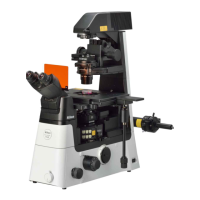
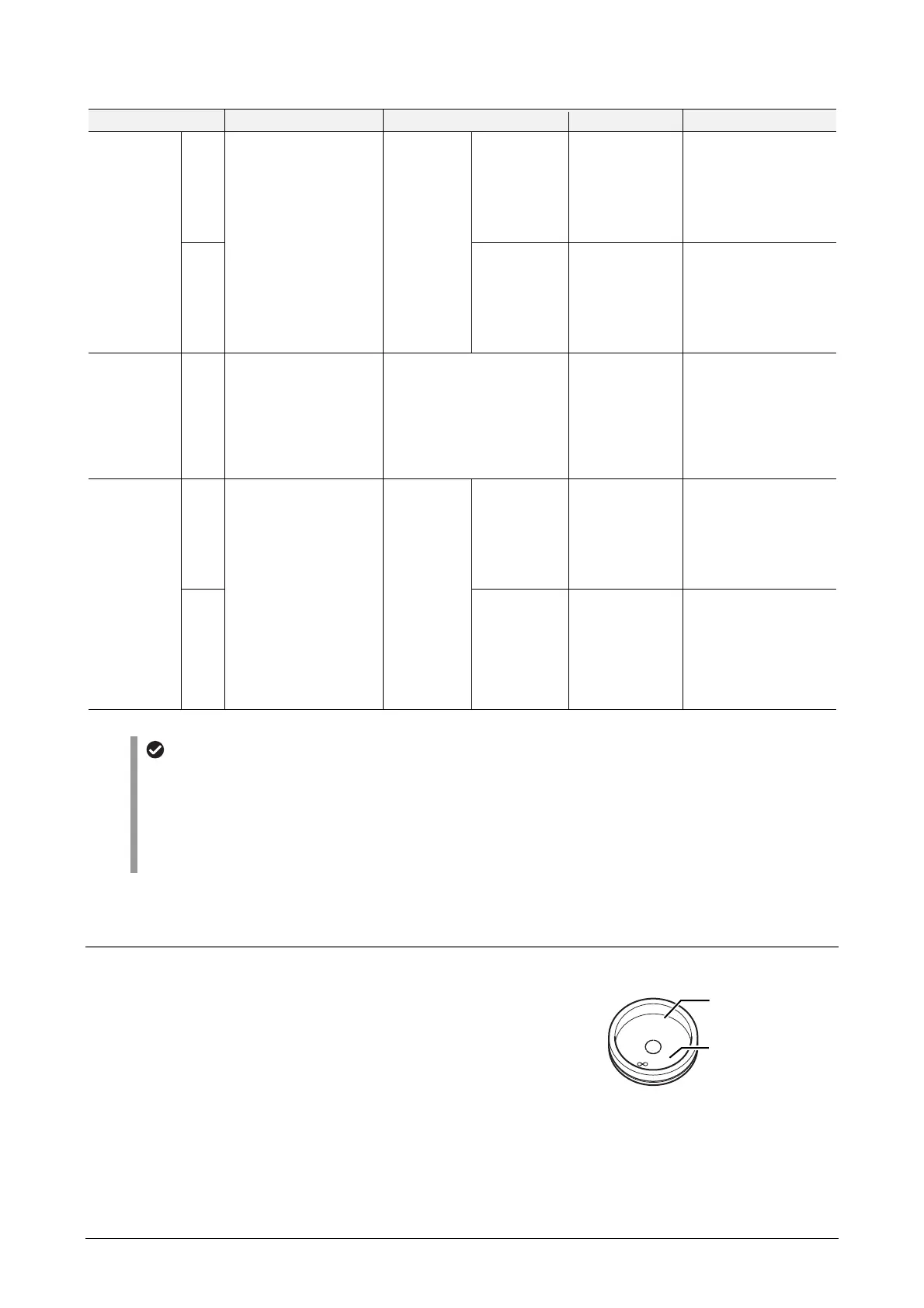